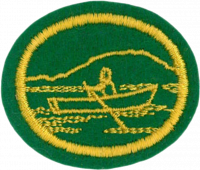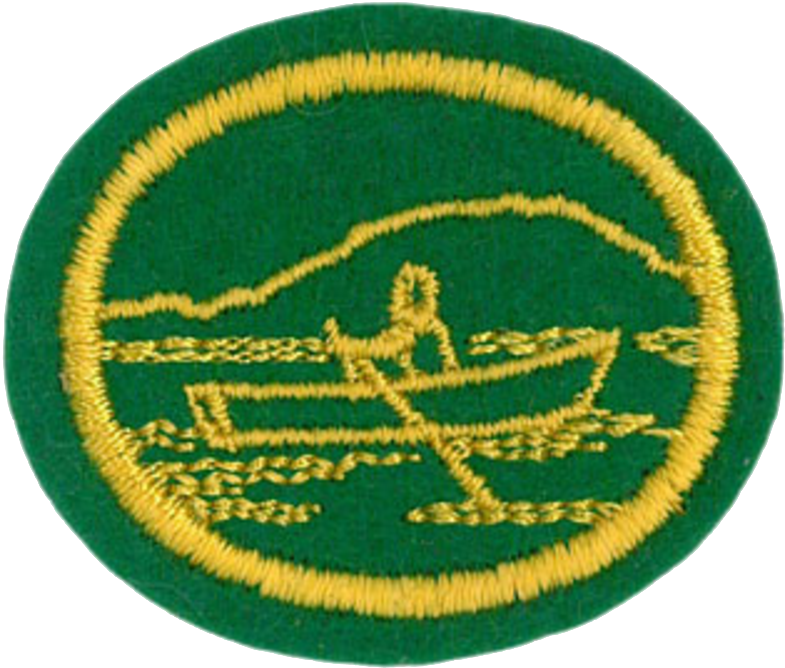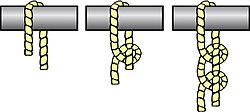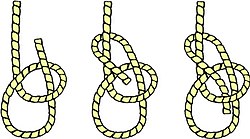Difference between revisions of "AY Honors/Rowing/Answer Key/es"
From Pathfinder Wiki
(Created page with "{{clear}}") |
(Updating to match new version of source page) |
||
| (39 intermediate revisions by 2 users not shown) | |||
| Line 1: | Line 1: | ||
| − | + | {{HonorSubpage}} | |
| − | + | <!--{{Honor_Master|honor=Rowing|master=Aquatic}}--> | |
| − | {{ | ||
| − | |||
| − | |||
| − | |||
| − | |||
| − | |||
| − | |||
| − | |||
| − | }} | ||
| − | |||
| − | {{Honor_Master | ||
| − | |||
| − | |||
<section begin="Body" /> | <section begin="Body" /> | ||
{{ansreq|page={{#titleparts:{{PAGENAME}}|2|1}}|num=1}} | {{ansreq|page={{#titleparts:{{PAGENAME}}|2|1}}|num=1}} | ||
<noinclude></noinclude> | <noinclude></noinclude> | ||
| − | <!-- 1. | + | <!-- 1. Tener la especialidad de Natación II. --> |
| − | {{honor_prerequisite| | + | {{honor_prerequisite|displayname=Natación II|honor=Swimming - Intermediate}} |
<noinclude></noinclude> | <noinclude></noinclude> | ||
{{CloseReq}} <!-- 1 --> | {{CloseReq}} <!-- 1 --> | ||
{{ansreq|page={{#titleparts:{{PAGENAME}}|2|1}}|num=2}} | {{ansreq|page={{#titleparts:{{PAGENAME}}|2|1}}|num=2}} | ||
<noinclude></noinclude> | <noinclude></noinclude> | ||
| − | <!-- 2. | + | <!-- 2. Con el instructor o consejero en la popa, y sin ayuda, remar correctamente las siguientes: --> |
<noinclude></noinclude> | <noinclude></noinclude> | ||
{{ansreq|page={{#titleparts:{{PAGENAME}}|2|1}}|num=2a}} | {{ansreq|page={{#titleparts:{{PAGENAME}}|2|1}}|num=2a}} | ||
| Line 36: | Line 23: | ||
{{ansreq|page={{#titleparts:{{PAGENAME}}|2|1}}|num=3}} | {{ansreq|page={{#titleparts:{{PAGENAME}}|2|1}}|num=3}} | ||
<noinclude></noinclude> | <noinclude></noinclude> | ||
| − | <!-- 3. | + | <!-- 3. Demostrar las siguientes actividades: --> |
<noinclude></noinclude> | <noinclude></noinclude> | ||
{{ansreq|page={{#titleparts:{{PAGENAME}}|2|1}}|num=3a}} | {{ansreq|page={{#titleparts:{{PAGENAME}}|2|1}}|num=3a}} | ||
| Line 48: | Line 35: | ||
{{ansreq|page={{#titleparts:{{PAGENAME}}|2|1}}|num=3c}} | {{ansreq|page={{#titleparts:{{PAGENAME}}|2|1}}|num=3c}} | ||
<noinclude></noinclude> | <noinclude></noinclude> | ||
| − | {{: | + | {{:AY Honors/Knot/Clove hitch/es}} |
| − | {{: | + | {{:AY Honors/Knot/Round turn/es}} |
| − | {{: | + | {{:AY Honors/Knot/Two half hitches/es}} |
| − | {{: | + | {{:AY Honors/Knot/Bowline/es}} |
| − | {{: | + | {{:AY Honors/Knot/Hitching tie/es}} |
<noinclude></noinclude> | <noinclude></noinclude> | ||
| Line 59: | Line 46: | ||
{{ansreq|page={{#titleparts:{{PAGENAME}}|2|1}}|num=4}} | {{ansreq|page={{#titleparts:{{PAGENAME}}|2|1}}|num=4}} | ||
<noinclude></noinclude> | <noinclude></noinclude> | ||
| − | <!-- 4. | + | <!-- 4. Por sí solo o con la ayuda de una persona que es un nadador, voltear (hundir) un bote de remos, voltearlo que quede derecho hacia arriba, entrar en él y, con las manos o un remo, remar 30 pies (9 metros). Decir por qué debe agarrarse o meterse en un bote de remos inundado. --> |
<noinclude></noinclude> | <noinclude></noinclude> | ||
{{CloseReq}} <!-- 4 --> | {{CloseReq}} <!-- 4 --> | ||
{{ansreq|page={{#titleparts:{{PAGENAME}}|2|1}}|num=5}} | {{ansreq|page={{#titleparts:{{PAGENAME}}|2|1}}|num=5}} | ||
<noinclude></noinclude> | <noinclude></noinclude> | ||
| − | <!-- 5. | + | <!-- 5. Alejarse de la costa o del muelle por sí solo en un bote de remos, acercarse a un nadador, y maniobrar de modo que el nadador pueda ser remolcado a tierra con seguridad. --> |
<noinclude></noinclude> | <noinclude></noinclude> | ||
| Line 70: | Line 57: | ||
{{ansreq|page={{#titleparts:{{PAGENAME}}|2|1}}|num=6}} | {{ansreq|page={{#titleparts:{{PAGENAME}}|2|1}}|num=6}} | ||
<noinclude></noinclude> | <noinclude></noinclude> | ||
| − | <!-- 6. | + | <!-- 6. Identificar y describir un bote pequeño, bote fondo plano, bote inflable, bote plano y bote de una persona. --> |
| − | |||
{{clear}} | {{clear}} | ||
| − | + | {{clear}} | |
| − | + | {{clear}} | |
| − | |||
| − | |||
| − | |||
| − | + | {{clear}} | |
| − | + | {{clear}} | |
| − | + | {{clear}} | |
| − | + | {{clear}} | |
| − | + | {{clear}} | |
| − | + | {{clear}} | |
| − | |||
| − | + | {{clear}} | |
| − | + | {{clear}} | |
| − | + | {{clear}} | |
| − | + | {{clear}} | |
| − | + | {{clear}} | |
| − | |||
| − | |||
| − | + | {{clear}} | |
| − | |||
| − | + | {{clear}} | |
| − | |||
<noinclude></noinclude> | <noinclude></noinclude> | ||
| Line 117: | Line 95: | ||
{{ansreq|page={{#titleparts:{{PAGENAME}}|2|1}}|num=7}} | {{ansreq|page={{#titleparts:{{PAGENAME}}|2|1}}|num=7}} | ||
<noinclude></noinclude> | <noinclude></noinclude> | ||
| − | <!-- 7. | + | <!-- 7. Identificar y describir los siguientes pasadores sujeta remos tipo tholepin, cuadrado, anillo y con abertura superior. Decir por qué la clase de sujetador tipo pin de remos no es recomendado. --> |
| − | + | {{clear}} | |
| − | + | {{clear}} | |
| − | + | {{clear}} | |
| − | + | {{clear}} | |
| − | + | {{clear}} | |
<noinclude></noinclude> | <noinclude></noinclude> | ||
| Line 133: | Line 111: | ||
{{ansreq|page={{#titleparts:{{PAGENAME}}|2|1}}|num=8}} | {{ansreq|page={{#titleparts:{{PAGENAME}}|2|1}}|num=8}} | ||
<noinclude></noinclude> | <noinclude></noinclude> | ||
| − | <!-- 8. | + | <!-- 8. ¿Cuál es la ventaja de movimientos completos mientras se rema? --> |
| − | + | {{clear}} | |
| − | |||
<noinclude></noinclude> | <noinclude></noinclude> | ||
| Line 142: | Line 119: | ||
{{ansreq|page={{#titleparts:{{PAGENAME}}|2|1}}|num=9}} | {{ansreq|page={{#titleparts:{{PAGENAME}}|2|1}}|num=9}} | ||
<noinclude></noinclude> | <noinclude></noinclude> | ||
| − | <!-- 9. | + | <!-- 9. ¿Cómo manejar un bote de remos en una tormenta repentina o intensidad de viento alto? --> |
<noinclude></noinclude> | <noinclude></noinclude> | ||
{{CloseReq}} <!-- 9 --> | {{CloseReq}} <!-- 9 --> | ||
{{ansreq|page={{#titleparts:{{PAGENAME}}|2|1}}|num=10}} | {{ansreq|page={{#titleparts:{{PAGENAME}}|2|1}}|num=10}} | ||
<noinclude></noinclude> | <noinclude></noinclude> | ||
| − | <!-- 10. | + | <!-- 10. ¿Cómo calcular el peso que puede llevar con seguridad en condiciones normales en cualquier barco de remos? --> |
<noinclude></noinclude> | <noinclude></noinclude> | ||
| Line 153: | Line 130: | ||
{{ansreq|page={{#titleparts:{{PAGENAME}}|2|1}}|num=11}} | {{ansreq|page={{#titleparts:{{PAGENAME}}|2|1}}|num=11}} | ||
<noinclude></noinclude> | <noinclude></noinclude> | ||
| − | <!-- 11. | + | <!-- 11. ¿Qué luces son necesarias en un bote de remos en la noche, con o sin motor fuera de borda? --> |
<noinclude></noinclude> | <noinclude></noinclude> | ||
{{CloseReq}} <!-- 11 --> | {{CloseReq}} <!-- 11 --> | ||
{{ansreq|page={{#titleparts:{{PAGENAME}}|2|1}}|num=12}} | {{ansreq|page={{#titleparts:{{PAGENAME}}|2|1}}|num=12}} | ||
<noinclude></noinclude> | <noinclude></noinclude> | ||
| − | <!-- 12. | + | <!-- 12. Conocer cómo equipar adecuadamente un bote de remos, mantener y cuidar de él durante la temporada de navegación. Conocer cómo preparar y guardar el bote de remos cuando no está en uso. --> |
<noinclude></noinclude> | <noinclude></noinclude> | ||
{{CloseReq}} <!-- 12 --> | {{CloseReq}} <!-- 12 --> | ||
<noinclude></noinclude> | <noinclude></noinclude> | ||
| − | == | + | ==Referencias== |
| − | |||
| − | |||
<noinclude></noinclude> | <noinclude></noinclude> | ||
| − | + | {{CloseHonorPage}} | |
| − | |||
Latest revision as of 19:03, 14 July 2022
1
Tener la especialidad de Natación II.
Para consejos e instrucciones, véase Natación II.
2
Con el instructor o consejero en la popa, y sin ayuda, remar correctamente las siguientes:
2a
Un cuarto de una milla (dos quintos de un kilómetro) en un curso recto, detener, hacer un giro y volver al punto de partida.
2b
Remar de espalda e ir en una línea recta 200 yardas (183 metros). Hacer un giro en el curso, continuado de espalda y regresar al punto de partida (debe haber movimientos completos después de cada remada. No se debe utilizar el pasador/argolla que sujeta los remos).
3
Demostrar las siguientes actividades:
3a
Adecuadamente echar un bote de remos al agua y sacarlo del agua desde y hacia la costa.
3b
De manera segura, ayudar a una persona hacia y desde un bote de remos, al lado de un muelle.
3c
Atar un bote de remos a un muelle utilizando cada uno de los siguientes:
| Ballestrinque |
|---|
|
Uso: Este nudo es la vuelta o el empalme de «utilidad general» para cuando se necesita un método rápido y sencillo de sujetar una cuerda alrededor de un poste, mástil o estaca (como atar mechas a palos en la especialidad de Arte de hacer velas) u otra cuerda (como en la especialidad de Macramé).
Cómo amarrar:
|
| Dos medio cotes |
|---|
|
Uso: Este nudo fiable está se amarra rápidamente y es el enganche más utilizado en los amarres.
Cómo amarrar:
|
| As de guía |
|---|
|
Uso: Este nudo no se resbala o desata cuando se amarra correctamente. Puede ser amarrado alrededor de la cintura de una persona y se utiliza para levantarla, ya que el seno no se aprieta bajo una carga. En navegación por vela, el as de guía se utiliza para atar una driza a un punto de la vela.
Cómo amarrar:
|
AY Honors/Knot/Hitching tie/es
4
Por sí solo o con la ayuda de una persona que es un nadador, voltear (hundir) un bote de remos, voltearlo que quede derecho hacia arriba, entrar en él y, con las manos o un remo, remar 30 pies (9 metros). Decir por qué debe agarrarse o meterse en un bote de remos inundado.
5
Alejarse de la costa o del muelle por sí solo en un bote de remos, acercarse a un nadador, y maniobrar de modo que el nadador pueda ser remolcado a tierra con seguridad.
6
Identificar y describir un bote pequeño, bote fondo plano, bote inflable, bote plano y bote de una persona.
7
Identificar y describir los siguientes pasadores sujeta remos tipo tholepin, cuadrado, anillo y con abertura superior. Decir por qué la clase de sujetador tipo pin de remos no es recomendado.
8
¿Cuál es la ventaja de movimientos completos mientras se rema?
9
¿Cómo manejar un bote de remos en una tormenta repentina o intensidad de viento alto?
10
¿Cómo calcular el peso que puede llevar con seguridad en condiciones normales en cualquier barco de remos?
11
¿Qué luces son necesarias en un bote de remos en la noche, con o sin motor fuera de borda?
12
Conocer cómo equipar adecuadamente un bote de remos, mantener y cuidar de él durante la temporada de navegación. Conocer cómo preparar y guardar el bote de remos cuando no está en uso.





